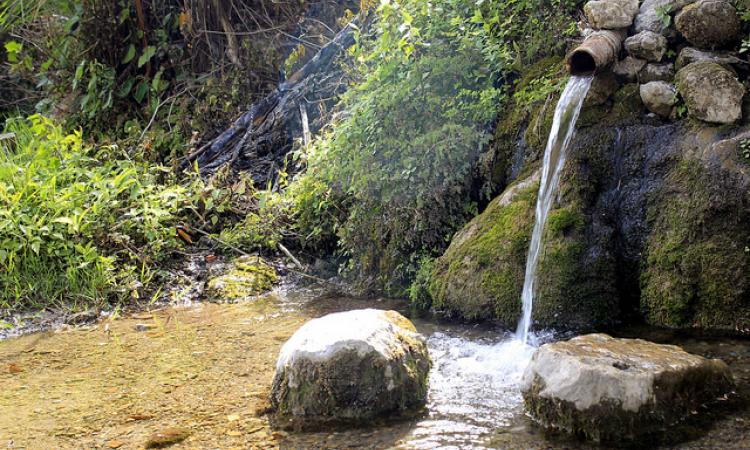
Spring or "bawdi"
This presentation by ACWADAM deals with springs, their characteristics and types. Springs are indicated by locations or points on the ground surface, where water from beneath the ground emerges on to the surface. A common example is of an overflowing unconfined aquifer.
Some of the characteristics of springs are:
- Discharge from spring may be constant or variable.
- Springs can be perennial or seasonal.
- Discharge from a spring may vary between from a trickle to about 100 cum per second.
- Difficulty in access.
- Variation in discharge.
- Temperature of spring water may vary from mean atmospheric temperature to lower or higher, even boiling temperatures. Hot quality water springs are common to many parts of the world.
This presentation attempts to identify the type of spring in order to understand how they behave in space and time:
- Depression springs are formed at topographic lows when water table reaches the surface due to topographic undulations. A local flow system is created and a spring is formed at the local discharge zone.
- Contact springs are formed where relatively permeable rocks overlie rocks of low permeability. A lithological contact is usually marked by a line of springs. Such springs are usually associated with perched aquifers in mountains.
- Fault springs are formed when faulting gives rise to conditions favourable for spring formation as groundwater (at depth) under hydrostatic pressure (such as in confined aquifers) can move up along such faults. An impermeable rock unit may be brought in contact with an unconfined aquifer due to faulting.
- Joint/ Fracture springs occur due to existence of jointed or permeable fracture zones in low permeability rocks. Movement of groundwater is mainly through fractures that may tap shallow as well as deep aquifers. Springs are formed where these fractures intersect the land surface.
- Karst springs - Limestones host many springs. Springs in limestone terrains can be interconnected to topographic depressions caused by sinkholes – depressions in the ground surface cause due to the dissolving of limestones below. Large quantities of water move through the cavities, channels, conduits and other openings developed in limestones.
This presentation is part of the training modules on planning, development and management of groundwater with special reference to watershed management programmes by ACWADAM. Please write to ACWADAM at acwadam@vsnl.net for sourcing these presentations.
Post By: rajshekar